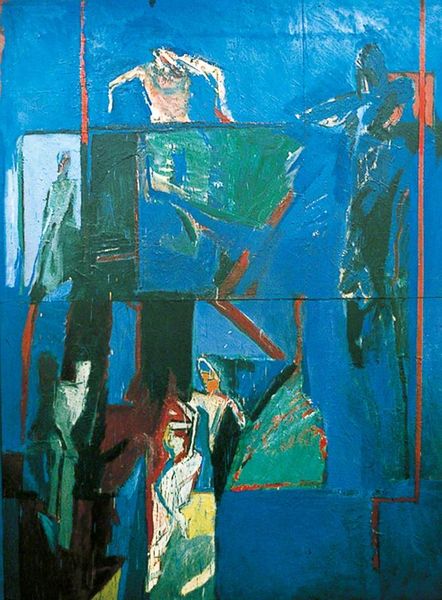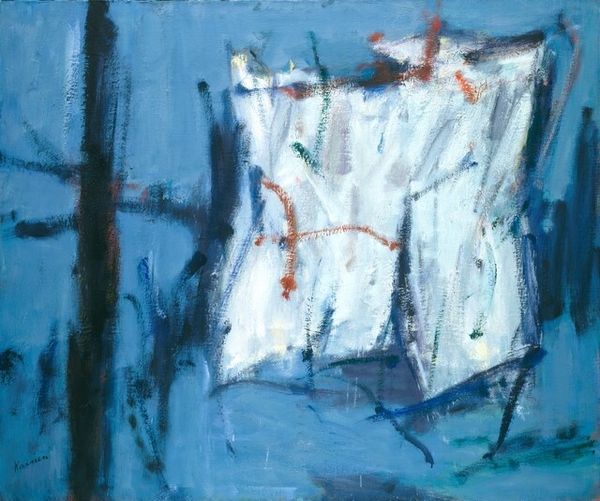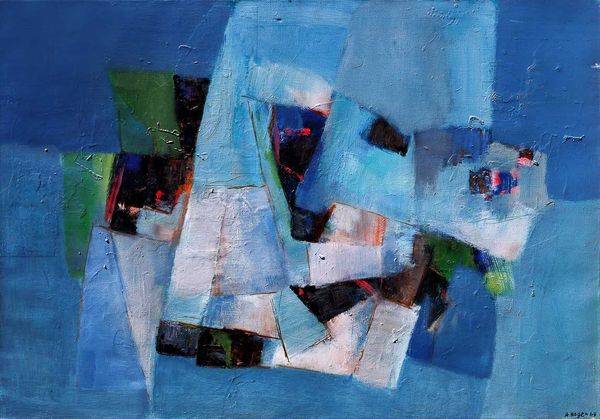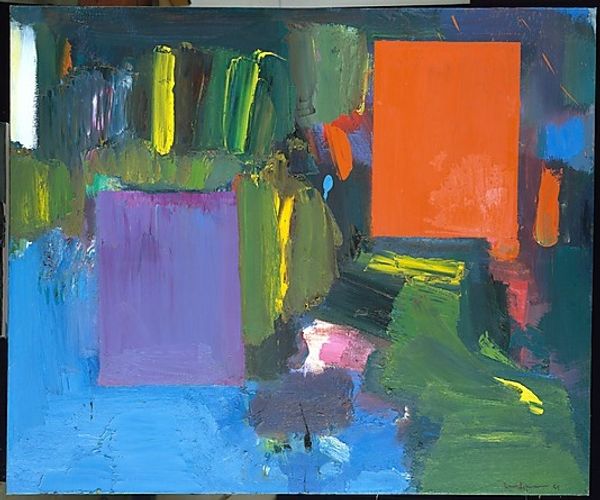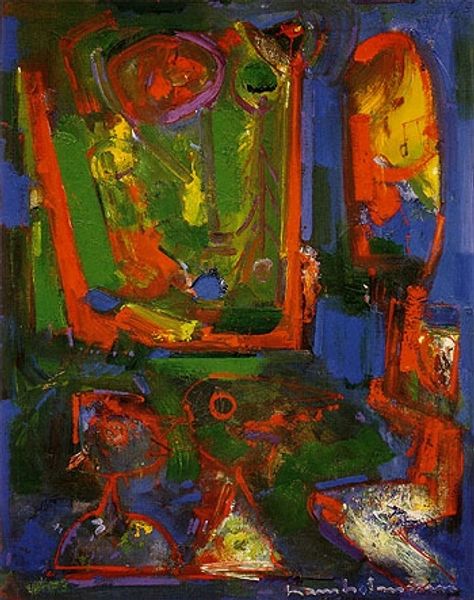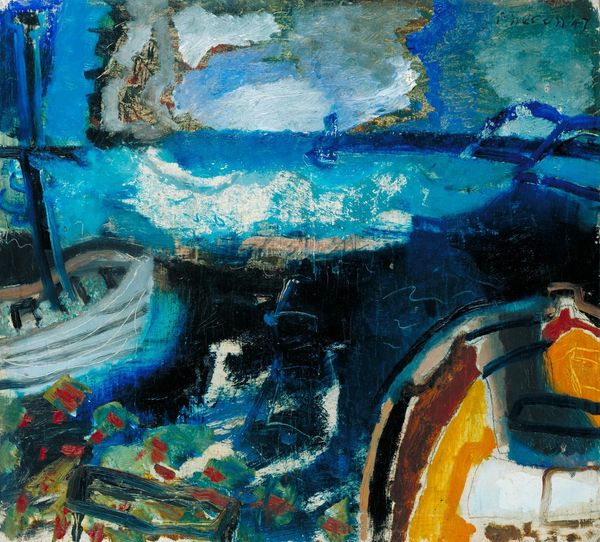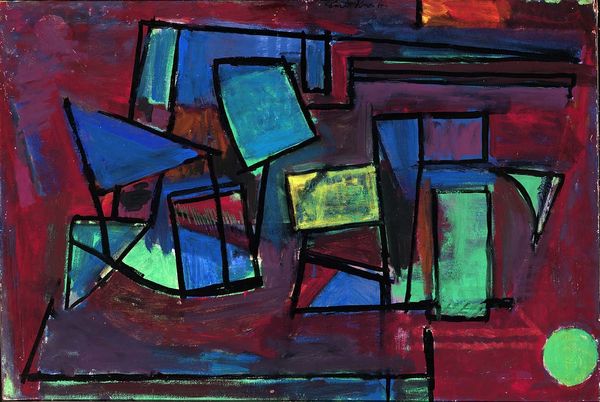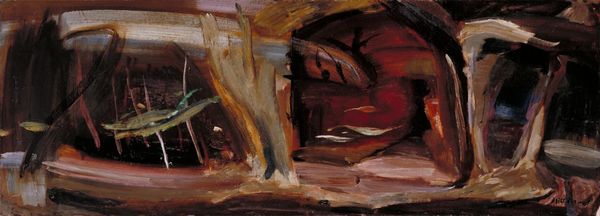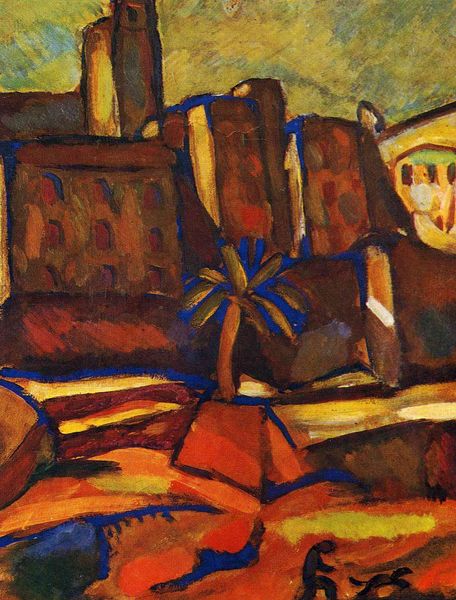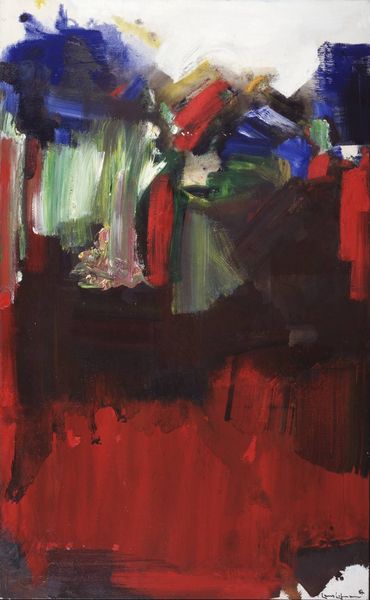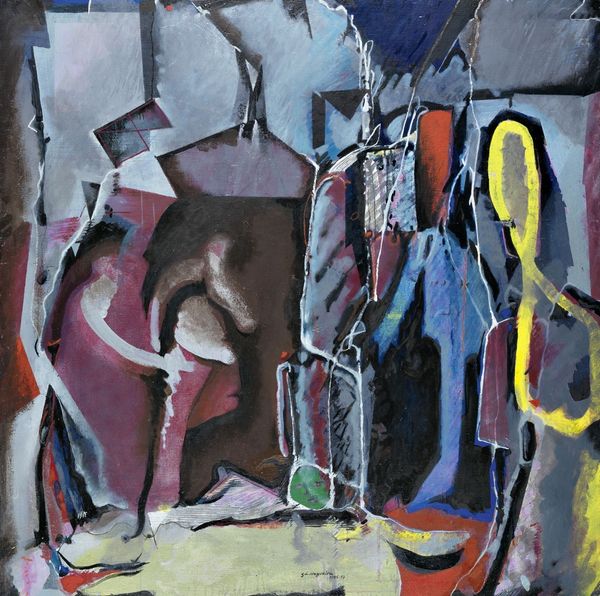
painting, oil-paint, impasto
#
abstract-expressionism
#
abstract expressionism
#
painting
#
oil-paint
#
landscape
#
figuration
#
oil painting
#
impasto
#
modernism
Copyright: Patrick Procktor,Fair Use
Editor: Here we have Patrick Procktor's "Figures by the Sea II," an oil painting from 1962. The impasto is so thick, creating a textured surface. I get a sense of melancholy from the muted blues and greens, despite the implied seaside setting. What compositional elements stand out to you? Curator: Primarily, the way Procktor structures space through color and form. Note the tension he creates with the ambiguous figure-ground relationship. Do these figures exist within the landscape, or are they emerging from it? Editor: It’s hard to tell! They almost seem like geometric blocks fitting into a puzzle. Are the figures intentionally simplified, or is Procktor more concerned with pure abstraction? Curator: Consider the deliberate use of line and the planar construction. Procktor reduces the figures to their most essential forms, thereby emphasizing the picture plane. There is an ongoing dialogue here between representation and abstraction. The brushstrokes themselves contribute to the emotional depth. Do you find the palette restrained or expressive? Editor: I think restrained in the color choices but expressive in how he applies the paint. The brushwork is so vigorous! It almost feels like he’s wrestling with the subject matter. Curator: Precisely. The very materiality of the paint becomes a vehicle for meaning. The heavy impasto imbues the surface with a sculptural quality. By investigating the intrinsic elements, we appreciate how Procktor constructs an emotionally resonant scene. Editor: This close look really changed my understanding; it’s more about form and the properties of paint itself, not just a melancholic scene. Curator: Yes. Art becomes an end in itself, showcasing its unique properties that speak across generations.
Comments
No comments
Be the first to comment and join the conversation on the ultimate creative platform.
